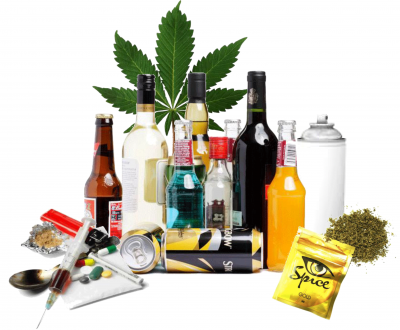Marijuana Affects Your Brain; duh…
(Exercising Your Mind) Recent British and American research has concluded that the main psychoactive ingredient in marijuana, delta-9 tetrahydro-cannabinol or THC may induce schizophrenia or other psychotic symptoms in susceptible or predisposed persons. I believe that it can happen because I have seen it happen. The individual was definitely predisposed to psychosis and had no business smoking weed because he was recently recovering from antipsychotic medication and ignored the advice that he should not, as his brain had “been through enough” and should be left to heal and rebalance itself. It must be added that he recovered within a few hours and is still free of any medication, including marijuana.
Even though it is clear through thousands of years of marijuana use that is generally benign and safe to use for a great variety of applications in its natural and “organic” form, it is still a psychotropic, mind-altering substance and must be experienced responsibly and not by young children unless under a competent physicians care and parental supervision.
This predisposition may arise by way of many interactions of THC with toxins absorbed from man-made environmental products and processes. The reason why anti-psychotics may make one more susceptible to the psychosis it is supposed to “treat” is analogous and will be explained later. But first, this scientific brainwashing propaganda must be analyzed.
I see that these research reports are only presented to revive the old marijuana as a “killer weed” sustained from back in the 1930’s when newspapers had headlines claiming that an entire Mexican family was driven insane after eating marihuana; or, like in the film “Reefer Madness” in 1936 a man is said to have killed his entire family with an axe while under the influence of marijuana. Assassin of Youth, 1937 is another of these propaganda films.
The goal is to further demonize marijuana in the public mind and to offset the many medicinal and industrial benefits that are being rediscovered as can be seen with the many United States that have legalized the plant for medicinal use.
The major problems with these clinical trials is that the scientists used pure THC without the benefit of the other phytochemicals (plant chemicals) that make up marijuana. All plants come complete with hundreds if not thousands of other substances that regulate and balance what scientists isolate as the “active ingredient”. Without regard for how these other psychoactive and metabolic parts of the plant may offset any negative effects of THC, the researchers plowed ahead as if they were accurately reproducing the methods in which the average pot-smoker or medical marijuana patient uses the stuff.
The researchers at Yale University actually administered THC intravenously! In what they claim to have been “…at relatively low doses… 50% of healthy volunteers began to show symptoms of psychosis”. Surprise! Putting anything directly into the bloodstream is going to act much differently than the same substance being eaten or smoked. Is it any wonder that the wife of Alexander Wood became the worlds first morphine addict? Wood invented the hypodermic syringe in 1853.
I stated earlier that other plant chemicals were left out. One of these, known as CBD or cannabidiol is the plant’s own built-in antipsychotic. “CBD was as effective as the established medicine amisulpride, sold as Solian by Sanofi-Aventis, in treating patients with psychosis… CBD, which reduces anxiety but does not produce the euphoric high of THC, may help offset some of the paranoid feelings.” (Study, by the University of Cologne on 42 patients with a history of schizophrenia.)
CBD was not given to the volunteers who were being tested for symptoms of psychosis while they were being injected with or swallowing huge doses of THC, even though CBD is part of what the average user would consume. The rationale: THC and CBD compete biochemically within the plant; so the more THC bred into the plant, less CBD will be available. While this may be true, there are many other antipsychotic, calming or otherwise stabilizing compounds that do not compete with THC in marijuana. Conveniently, these were not mentioned in the studies.
Another tactic used in the demonizing of this plant are drug dependency statistics. Supposedly, “Increasing numbers of people are seeking help for cannabis problems at specialist clinics. In 2005, only heroin users accounted for a greater proportion of patients.” Of course the number of people entering specialist clinics for “cannabis problems” is increasing. These cannabis problems are law enforcement. When people are arrested on marijuana charges, many of them are given the option of “treatment” or jail time; what do you think they will choose? Careful analysis of marijuana arrests and enrollment in treatment clinics is almost parallel.
The gross anatomy of toxic psychosis; toxic withdrawal psychosis or “supersensitivity psychosis”.
To begin with, it must be known that it does not matter what drug causes the toxic psychosis because the reaction is always the same. This is because toxic psychosis is a non-specific reaction of the brain to an overdose of anything that affects it. As I stated in the beginning, the recovering psychiatric patient coming off of antipsychotics recovered with no more need for psych-drugs and little more than a talking down and a cup of organic “bed-time” tea.
Why would someone who is predisposed to mental-illness, or someone who has had long-term treatment with anti-psychotics be more likely to become deranged by marijuana use? It may be related to the widely accepted dopamine hypothesis of schizophrenia. But who really knows? This theory proposes that excess dopamine sensitivity, overproduction of dopamine or a combination of these is responsible for the symptoms of psychosis, dementia, bipolar and schizophrenia.
Most anti-psychotic drugs work by antagonizing or blocking the transmission of
the neurotransmitter dopamine at one or more identified receptor sites. This is very important because one late consequence of long term dopamine blockade, is an increased number of dopamine receptors per cell, which causes the brain to become supersensitive to the effects of dopamine. This is a compensatory mechanism that the brain initiates to rebalance itself from the anti-psychotic drug’s effect.
Interestingly, this person who became psychotic before my eyes after smoking the bong most probably had increased dopamine sensitivity due to the psychiatric treatment. His therapy may be categorized as long-term dopamine blockade since he was on the drugs for nine years.
The significance of this becomes apparent when you realize that marijuana is a dopamine receptor sensitizing agent when used as a psychoactive; when it is smoked or eaten for the THC effect. In other words, marijuana increases the brain’s receptivity and sensitivity to dopamine.
The dopamine theory of schizophrenia and psychosis comes from many directions. First, it has been demonstrated through clinical practice that the disease known as Parkinson’s is a dopamine mediated illness. Dopamine receptors in the motor or movement neurons are inhibitory, meaning they stop movement. When motor neuron dopamine is in short supply as with Parkinson’s, uncontrollable movements result. This is the same reason that many people prescribed anti-psychotic drugs develop a drug-induced condition known in psychiatry as Tardive Dyskinesia (TD), which is a Parkinson-Like movement disorder – because anti-psychotics block dopamine.
The treatment for Parkinson’s is primarily with the drug known as L-Dopa or other dopamine increasing drugs. However, after a few years on these drugs, up to 30 percent of Parkinson’s patients experience visual hallucinations and even psychotic symptoms.
Another reason leading to the conclusion that dopamine is the culprit in schizophrenia and psychosis is that cocaine and amphetamines which both increase dopamine production or sensitivity are factors in drug induced psychosis seen in emergency rooms.
But the major argument for dopamine as a factor in schizophrenia, and probably the stupidest, is from the analysis of the mechanisms of action of the antipsychotic drugs. Researchers assume that because they have designed drugs that have an affinity for dopaminergic pathways, and the symptoms of psychosis and schizophrenia appear to diminish, then dopamine must be the culprit. However, pharmacologic manipulation may produce changes that compensate for the disease without actually affecting the disordered mechanism itself. This is also seen in Parkinson’s, whereas sometimes blocking cholinergic channels alleviate some of the symptoms normally alleviated by dopaminergic agents.
It is interesting that even though the antipsychotic drugs occupy dopamine channels very quickly after administration, the anti-psychotic effects may not be apparent for several weeks. This is probably because of other consequences that are secondary to the antipsychotic that develops over several weeks. The entire brain and central nervous system may be down-regulating so that it maintains as close to equilibrium as possible.
There are many other speculations as to why any individual may be more prone to a marijuana induced psychosis, including the transient or short-lived effects that progesterone and estrogen have on dopamine in the under recognized condition known as cyclic menstrual psychosis, which excludes most males. It is more likely that most problems with neurotransmitters, including dopamine are caused by toxins such as psychiatric drugs and other synthetic pollutants. Mostly synthetic by-products from fossil fuel, building materials, agricultural wastes and botched street drug synthesis like MPTP or 1-methyl-4phenyl-1,2,3,6-tetrahydropyridine are also more apt to be responsible
The bottom line is that the already legal and highly regulated compounds in common use today are far more dangerous to one’s mental and physical health than marijuana and many other illicit substances.
Alcohol is involved in sixty-five percent of all murders and 50% of all driving fatalities. In the United States, every 30 minutes someone is killed in an alcohol related traffic accident; and over 15 million Americans are dependent on alcohol – 500,000 are between the age of 9 and 12.
Tobacco is more addictive than heroine and kills up to 450,000 people a year and smells like garbage.
Of course, this is all politics and money, not science. Even the director of the`Stanley Center for Psychiatric Research at the Broad Institute of MIT and Harvard admits after receiving $100 million for Psychiatric research from the Stanley Medical Research Institute: “It will allow real multidisciplinary collaborative effort to try to achieve real insight into the cause of these illnesses. There is almost none today.” He was speaking about bipolar and schizophrenia research into their molecular bases. It is interesting that one of the most prominent things I hear psychotic patients accused of by paractitioners is that the psychotics are without insight to their own condition as well.
Will they find a defect in an enzyme or other metabolic process that may be more naturally treated? Maybe they will realize as the Orthomolecular Psychiatrists and Physicians did some 50 or so years ago that the molecular structure of neurotransmitters are composed of amino acids, enzymes, co enzymes which are many times vitamins and other cofactors such as minerals. Perhaps they will also recognize that the brain is 60 percent fat molecules that come from omega-3 and omega-6 essential fatty acids from marijuana seeds, flax seeds, chia, etc. and from fatty fish like salmon. It might even follow that they may use these substances that occur naturally in the body to treat these disorders through supplementation.
It is long overdue to look for cause and to treat cause rather than masking it with drugs that generally make the problem worse, creating life-time consumers who have become dependent on these drugs. There is no doubt in my mind that marijuana is far safer and more effective for treating many conditions when combined with other natural and spiritual therapies such as meditation and herbal therapies. I vo
te with my dollar and have seen destructive trends reverse because of this practice.
References:
Principles of Neural Science, Eric R. Kandel-2000
The Natural Mind, Andrew Weil, M.D.-1972
Your Drug May Be Your Problem, Peter R. Breggin, M.D.-1999
NOTES:

